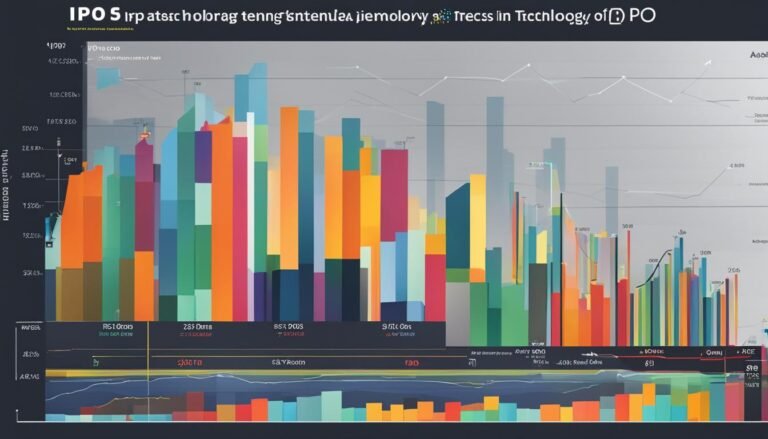Strategic Divestitures: Maximizing Shareholder Value
Did you know that divestitures can lead to a staggering 20% increase in shareholder value? That’s right, strategic divestitures have the power to significantly enhance the value of a company’s stock and drive long-term growth. By strategically shedding non-core assets and streamlining operations, companies can unlock hidden value and provide a clear path for investors to reap the benefits. In this article, we will explore the world of divestment strategies and corporate divestiture planning, uncovering how these strategic moves can maximize shareholder value and optimize business performance.
Key Takeaways:
- Divestitures can lead to a 20% increase in shareholder value
- Strategic divestitures involve shedding non-core assets and streamlining operations
- Divestment strategies can optimize business performance and drive long-term growth
- Corporate divestiture planning is crucial for maximizing shareholder value
- By strategically divesting, companies provide a clear path for investor returns
Understanding Spin-offs and Divestitures
Spin-offs and divestitures are two common strategies utilized by companies to sharpen their strategic focus and drive shareholder value. By implementing these strategies, companies can streamline their operations and shed non-core assets, allowing them to concentrate on their core businesses and ultimately maximize shareholder value.
An essential aspect of understanding spin-offs is the creation of a new independent company by distributing new shares of an existing subsidiary to shareholders. This process allows the newly formed entity to operate independently, with its own management structure and strategic direction.
Divestitures, on the other hand, involve the sale of a business unit to another company. This strategy allows companies to divest themselves of non-core assets and concentrate on their core competencies.
Both spin-offs and divestitures play a vital role in enabling companies to refocus their strategic efforts and allocate resources more effectively, all while optimizing shareholder value.
“Spin-offs and divestitures provide companies with the opportunity to sharpen their strategic focus, streamline operations, and generate greater value for shareholders.”
With spin-offs, companies can create a new entity that is solely dedicated to a particular industry or market segment, allowing them to concentrate their efforts on areas where they have a competitive advantage. Divestitures enable companies to sell off business units that are no longer aligned with their long-term strategic goals, freeing up resources and capital for investment in more promising areas.
Ultimately, both spin-offs and divestitures are driven by the desire to enhance strategic focus and maximize shareholder value. These strategies can help companies optimize their business operations, improve financial performance, and deliver long-term sustainable growth.
Benefits of Spin-offs and Divestitures
When companies undertake spin-offs and divestitures, they can unlock various benefits:
- Clear strategic focus: Spin-offs and divestitures enable companies to focus on their core businesses and areas of expertise, enhancing operational efficiency and delivering competitive advantage.
- Increased flexibility: These strategies provide companies with the flexibility to adapt to changing market conditions and pursue new opportunities that align with their strategic goals.
- Enhanced shareholder value: By streamlining operations and shedding non-core assets, companies can allocate resources more effectively and generate higher returns for shareholders.
- Opportunities for growth: Spin-offs and divestitures free up capital that can be reinvested in the core business or used for strategic acquisitions, fueling future growth.
Comparative Analysis: Spin-offs vs. Divestitures
| Spin-offs | Divestitures |
|---|---|
| Focus on creating a new independent entity. | Focus on selling off a business unit to another company. |
| Can lead to a more focused business strategy for both the parent company and the newly independent entity. | Provide immediate cash inflow and help reduce debt or fund new initiatives. |
| Greater market reception when there is perceived potential in the assets involved and alignment with the company’s overall strategy. | Immediate financial benefits, but market reception depends on various factors such as market conditions, the attractiveness of the business unit, and the parent company’s strategic direction. |
Both spin-offs and divestitures offer distinct advantages depending on the company’s strategic objectives and the nature of the assets involved. Understanding the differences between these strategies allows companies to make informed decisions that align with their long-term goals.
Comparative Advantages of Spin-offs and Divestitures
Both spin-offs and divestitures offer distinct advantages under different circumstances. These strategic moves can drive efficiency, value creation, and shape market reception, depending on the specific goals and assets involved.
Spin-offs: Focused Business Strategy and Increased Efficiency
Spin-offs present an opportunity for companies to refine their business strategy by creating a more focused entity. The parent company can shed non-core assets and concentrate resources on its core businesses, resulting in improved operational efficiency. This enhanced focus enables companies to allocate capital more effectively and align their operations with market demands, leading to increased profitability and shareholder value.
Divestitures: Immediate Cash Influx and Strategic Opportunities
Divestitures, on the other hand, offer the advantage of generating an immediate cash influx. By selling off non-core assets, companies can free up capital to reduce debt, fund new initiatives, or reinvest in their core businesses. These strategic moves help companies streamline their operations, optimize their resource allocation, and enhance their financial flexibility. By divesting underperforming or non-strategic assets, companies can allocate resources to high-growth opportunities and increase the potential for value creation.
Market Reception: Assets, Potential, and Parent Company Strategy
The market’s reception to spin-offs and divestitures depends on various factors, including the perceived potential of the assets being divested and the parent company’s overall strategy. Spin-offs, particularly when the new entity demonstrates strong growth prospects, may receive positive market reception due to increased visibility and focused operations. Divestitures that involve valuable assets and strategic opportunities may also be well-received, as they signal a commitment to streamlining operations and maximizing shareholder value.
Ultimately, the comparative advantages of spin-offs and divestitures are influenced by the specific objectives and circumstances of the companies involved. The decision-making process should consider the potential for increased efficiency, value creation, and market reception, aligning with the company’s long-term strategic goals.
| Advantages | Spin-offs | Divestitures |
|---|---|---|
| Business Focus | Allows for a more focused business strategy | Enables companies to shed non-core assets and concentrate resources on core businesses |
| Efficiency | Increase in operational efficiency | Optimizes resource allocation and enhances financial flexibility |
| Immediate Cash Influx | N/A | Generates immediate cash influx to reduce debt or fund new initiatives |
| Strategic Opportunities | N/A | Enables reinvestment in core businesses or strategic acquisitions |
| Market Reception | Positive reception when the new entity demonstrates strong growth potential | Depends on the perceived value of divested assets and the company’s strategic direction |
Strategic Considerations for Asset Separation
When considering asset separation, companies need to carefully evaluate the alignment of each business unit with the company’s core mission and future strategy. This assessment ensures that the separation process maximizes the viability and growth potential of the remaining business units. Key factors to evaluate during the asset separation process include financial stability, market position, operational independence, and regulatory considerations.
Business units with strong standalone potential and distinct operational requirements are prime candidates for separation. By identifying and evaluating potential candidates for separation, companies can strategically optimize their portfolio and focus their resources on core businesses.
Financial stability is a crucial consideration when determining which business units to separate. Companies must assess the financial health and profitability of each unit and consider the impact of the separation on their overall financial position.
Market position is another important factor to evaluate. Companies need to assess the competitive landscape and growth potential of each business unit to determine their market value and attractiveness to potential buyers or investors.
Operational independence is essential for successfully separating assets. Companies should evaluate the level of operational integration between the business unit and the parent company and assess the ease of separating processes, systems, and personnel.
Regulatory considerations must also be taken into account during the asset separation process. Companies need to identify and address any regulatory approvals, legal requirements, or compliance issues related to the separation to ensure a smooth transition.
In summary, strategic asset separation requires a comprehensive evaluation of business units based on financial stability, market position, operational independence, and regulatory considerations. By carefully considering these factors, companies can optimize their portfolio, streamline operations, and focus on their core businesses.
Asset Separation Considerations
- Financial stability assessment
- Evaluation of market position and growth potential
- Operational independence analysis
- Identification and addressing of regulatory considerations
Example Business Unit Assessment Table
| Business Unit | Financial Stability | Market Position | Operational Independence | Regulatory Considerations |
|---|---|---|---|---|
| Business Unit A | Stable financial performance with potential for growth | Dominant market position with high demand | High degree of operational integration with parent company | No significant regulatory hurdles |
| Business Unit B | Financially unstable with declining profitability | Competitive market with limited growth potential | Operational processes can be easily separated | Regulatory approval required for separation |
| Business Unit C | Strong financial performance with consistent growth | Leading market position with opportunities for expansion | Minimal operational integration with parent company | No regulatory barriers for separation |
Based on the assessment table, Business Unit A and Business Unit C show strong potential for asset separation due to their financial stability, market position, and operational independence. Business Unit B’s financial instability and limited growth potential make it less favorable for separation.
Active Portfolio Management
Active portfolio management is a crucial practice for companies aiming to maximize shareholder value and navigate market changes effectively. By regularly reviewing their business units, assessing their performance, and making strategic decisions, companies can enhance the value of their portfolios and ensure alignment with their strategic objectives. This involves actively managing assets, optimizing resource allocation, and responding proactively to market dynamics.
Companies engaged in active portfolio management continuously evaluate their portfolio composition to identify opportunities for value enhancement and risk mitigation. Regular assessment of business units allows for informed decisions regarding divestments, acquisitions, or restructuring initiatives. By strategically reallocating resources and divesting underperforming or non-core assets, companies can optimize their portfolio and enhance overall performance.
Furthermore, active portfolio management enables companies to stay agile in the face of market changes. By closely monitoring industry trends, consumer demand, and competitive landscape, companies can identify emerging opportunities and threats. This proactive approach allows for timely adjustments to the portfolio composition, ensuring companies remain well-positioned in the market.
Strategic Resource Allocation
In active portfolio management, strategic resource allocation plays a critical role in maximizing value. Companies must carefully allocate resources across their business units, taking into account growth potential, profitability, and strategic importance. By allocating resources effectively, companies can nurture high-potential business units, allocate capital efficiently, and drive value creation.
Strategic resource allocation requires a deep understanding of each business unit’s operational and financial performance. By conducting regular performance reviews and utilizing appropriate metrics, companies can identify opportunities for improvement or reallocation. This allows for a data-driven approach to resource allocation, enhancing value across the portfolio.
Optimizing Risk-Return Profile
In active portfolio management, optimizing the risk-return profile is crucial for long-term value creation. Companies must seek a balance between higher-growth, higher-risk assets and more stable, lower-risk assets to diversify risk and capture growth opportunities. Through this approach, companies can strike a balance between generating returns and managing risk, thus maximizing shareholder value.
Effective risk management involves identifying potential risks within the portfolio and implementing appropriate strategies to mitigate them. This may include diversification, hedging, or other risk management techniques tailored to the specific asset classes and business units. By optimizing the risk-return profile, companies can safeguard their portfolios against unforeseen market changes and ensure sustainable value creation.
Benefits of Active Portfolio Management
The benefits of active portfolio management extend beyond value enhancement. By actively managing their portfolios, companies can strengthen investor confidence through clear communication and transparency. Investors appreciate proactive decision-making, demonstrating that companies are continuously evaluating and optimizing their portfolio to maximize returns.
Furthermore, active portfolio management enables companies to capitalize on emerging market opportunities, adapt to changing customer demands, and stay ahead of industry trends. By maintaining a dynamic and agile portfolio, companies can capture growth potential and secure a competitive advantage.
In summary, active portfolio management enables companies to proactively respond to market changes, optimize resource allocation, and enhance overall shareholder value. Through continuous evaluation and strategic decision-making, companies can adapt to evolving market dynamics while maintaining a focus on long-term value creation.
Financial Implications and Investor Perspectives
Strategic divestitures have significant financial implications and can impact a company’sfirm performance andstock prices. Following a spin-off, companies often experience a shift in capital allocation and business focus, leading to improved operational efficiency and strategic agility. Spin-offs and divestitures can unlockshareholder value, and market reactions to these strategic moves can be positive, leading to increased stock prices.
Investor perspectives play a crucial role in assessing the potential value creation from a divestiture. Investors look for clarity of information regarding the divestiture, including the rationale behind the decision, the impact on the remaining business units, and the expectedshareholder returns. They also want to ensuregovernance andcontrol improvements to protect their investment in the company.
Impact on Firm Performance
Strategic divestitures can have a transformational effect on a company’s performance. By shedding non-core assets and focusing on core businesses, companies can enhance their operational efficiency and streamline their operations. This increased focus allows management to allocate resources more effectively and improve the overall financial health of the company. As a result, divestitures often lead to improvedoperating performance andprofitability.
Market Reactions and Stock Prices
The market’s response to a strategic divestiture can greatly impact a company’s stock prices. When a company’s divestiture strategy aligns with investor expectations and demonstrates a commitment to delivering value, the market typically reacts positively. Investors recognize the potential benefits of a divestiture, such as increased operational focus and improved financial performance, leading to higher stock prices.
However, if a divestiture is seen as a hasty or poorly executed move, it could negatively impact a company’s stock prices. The market’s perception of the divestiture’s value and its alignment with the company’s long-term strategy play a significant role in determining the market’s response.
Case Study: Divestiture Impact on Stock Prices
“Company A’s strategic divestiture resulted in a 20% increase in its stock price within the first month. The market recognized the value creation potential of the divestiture and the company’s increased focus on its core business.”
The table below illustrates the stock price performance of select companies before and after their divestiture:
| Company | Pre-Divestiture Stock Price | Post-Divestiture Stock Price | Percentage Change |
|---|---|---|---|
| Company A | $50 | $60 | 20% |
| Company B | $80 | $70 | -12.5% |
| Company C | $90 | $100 | 11.1% |
This table highlights the variation in stock price performance following divestitures. While Company A experienced a positive market response and a subsequent increase in stock prices, Company B’s stock price decreased after the divestiture. Company C, on the other hand, saw a modest but positive increase in stock price.
These examples demonstrate the importance of a well-executed divestiture strategy in influencing market reactions and stock prices.
Investor Expectations
Investors have expectations regarding the outcomes of a divestiture, beyond the impact on stock prices. Investors seek transparency and clear communication from the company regarding the divestiture’s rationale and its potential to enhance shareholder value. Additionally, investors expect improved governance and control measures to better protect their investments. Meeting these expectations can help improve investor confidence in the company and foster long-term relationships.
Operational Execution of Separations
The successful execution of divestitures requires a well-defined process and effective change management. To navigate the divestiture process smoothly, companies need to follow a structured approach that includes defining the asset to be divested and developing a comprehensive divestiture strategy. This strategic planning ensures that the divestiture aligns with the company’s long-term goals and maximizes the operational and financial benefits.
Achieving operational separation is a crucial step in the divestiture process. It involves disentangling systems, processes, and personnel from the parent organization to establish the new entity’s independence and ability to operate autonomously. Operational separation requires meticulous attention to detail, as it encompasses various aspects such as IT systems, supply chains, legal entities, and employees’ roles and responsibilities.
Change management plays a vital role during the transitional phase of divestitures. It involves effectively communicating the changes to all stakeholders and providing comprehensive support to minimize disruptions and maintain continuity of service. A well-designed change management strategy ensures that employees understand their new roles and responsibilities, mitigates resistance to change, and fosters a smooth transition for both the parent company and the divested entity.
The divestiture process, operational separation, and change management are interconnected and require careful planning and execution for a successful separation. By following a structured approach and considering the unique characteristics of each divestiture, companies can ensure a seamless transition and maximize the value generated from the divested assets.
| Step | Description |
|---|---|
| 1 | Define divestiture goals and objectives |
| 2 | Evaluate and value the asset to be divested |
| 3 | Develop a comprehensive divestiture strategy |
| 4 | Execute the separation agreement and legal documentation |
| 5 | Disentangle systems, processes, and personnel |
| 6 | Communicate the changes to stakeholders |
| 7 | Provide support during the transition period |
| 8 | Monitor and assess the divestiture’s performance |
Challenges and Risks in Spin-offs and Divestitures
While spin-offs and divestitures offer many benefits, there are also challenges and risks associated with these strategic moves. It is crucial for companies to address these challenges effectively and implement robust risk management strategies to maximize the success of spin-offs and divestitures.
Managing Stranded Costs
One significant challenge in spin-offs and divestitures is managing stranded costs. Stranded costs refer to the expenses that remain with the parent company after the separation of a business unit. These costs can include ongoing operational expenses, lease obligations, pension liabilities, and other financial commitments.
Companies must carefully assess and plan for stranded costs to prevent them from negatively impacting the financial health of the parent company. This involves conducting a thorough evaluation of the potential costs and developing strategies to minimize their impact.
Legal and Regulatory Barriers
Another risk in spin-offs and divestitures is the presence of legal and regulatory barriers. Companies need to navigate various legal requirements, such as obtaining approvals from regulatory authorities, complying with antitrust regulations, and addressing contractual agreements.
Failure to adequately address legal and regulatory barriers can result in delays, increased costs, and potential legal disputes. It is essential for companies to engage legal experts and regulatory advisors to ensure compliance and minimize legal risks.
Market Reactions and Impact on Remaining Business Units
Market reactions to spin-offs and divestitures can also pose risks. Changes in investor sentiment, stock price fluctuations, and market uncertainty may affect the success of the strategic moves. Moreover, the separation of a business unit can impact the remaining business units within the parent company.
Companies must carefully consider the potential impact on the remaining business units and develop strategies to address any disruptions or challenges. This may involve realigning resources, ensuring a smooth transition, and providing support to the remaining teams to maintain operational continuity.
Risk Management Strategies
To mitigate the challenges and risks associated with spin-offs and divestitures, effective risk management strategies are crucial. Companies need to prioritize risk identification and assessment, develop contingency plans, and implement proactive risk mitigation measures.
By establishing robust risk management frameworks, companies can minimize the potential negative impact of stranded costs, navigate legal and regulatory barriers, and address market reactions effectively. This ultimately enhances the chances of success and maximizes shareholder value from spin-offs and divestitures.
| Challenges and Risks | Risk Management Strategies |
|---|---|
| Managing Stranded Costs | Thoroughly assess potential costs and develop strategies to minimize their impact. Seek expert advice and conduct comprehensive financial evaluations. |
| Legal and Regulatory Barriers | Engage legal experts and regulatory advisors to ensure compliance. Plan ahead and allocate sufficient resources for obtaining necessary approvals and addressing contractual obligations. |
| Market Reactions and Impact on Remaining Business Units | Anticipate potential market reactions and develop communication strategies to address investor concerns. Realign resources and provide support to the remaining business units. |
| Implement Robust Risk Management Strategies | |
| Prioritize risk identification and assessment. Develop contingency plans and proactive risk mitigation measures. Establish a strong risk management framework. | |
Effective risk management is essential for companies embarking on spin-offs and divestitures. By proactively addressing challenges and implementing robust risk mitigation strategies, companies can enhance the success of these strategic moves and ensure the long-term financial health of the organization.
Creating Shareholder Value with Divestitures
Divestitures can play a crucial role in creating significant value for shareholders. By allowing companies to focus on their core business, generate cash, and improve operating performance, divestitures can unlock opportunities for value creation. When companies divest non-core assets, they can better allocate resources and increase profitability, leading to enhanced shareholder value.
One of the primary benefits of divestitures is the ability to sharpen the focus on the core business. By divesting non-core assets, companies can direct their attention and resources to the areas where they have a competitive advantage, enabling them to generate more value for shareholders.
Furthermore, divestitures provide companies with opportunities to reinvest the proceeds in their core businesses or fund strategic acquisitions that align with their long-term objectives. This allows companies to strengthen their core operations, expand into new markets, or develop innovative products and services that can drive growth and shareholder value.
Executing divestitures strategically can also lead to higher valuation multiples and increased investor confidence. When investors see that a company is taking steps to streamline its operations and focus on its core business, they perceive it as a positive signal. This can result in a higher market valuation for the company, benefiting existing shareholders.
Overall, through divestitures, companies can optimize their resources, enhance their operational performance, and drive long-term growth. By divesting non-core assets and repositioning themselves strategically, companies can create a more focused and efficient organization that generates value for shareholders.
Example Table: Value Creation through Divestitures
| Company | Divested Assets | Resulting Focus | Operating Performance |
|---|---|---|---|
| Company A | Non-core business units | Core business segments | Improved profitability and efficiency |
| Company B | Underperforming divisions | Strategic growth areas | Increased market share and revenue |
| Company C | Non-strategic investments | Key product lines | Enhanced innovation and competitiveness |
The above table showcases examples of companies that have created shareholder value through divestitures. By divesting non-core assets or underperforming divisions, these companies were able to redirect their focus to their core businesses. This resulted in improved operating performance, including increased profitability, market share, and innovation.
Conclusion
Strategic divestitures are key to optimizing ROI and maximizing business value. By meticulously planning and executing divestments, companies can enhance shareholder value and improve overall performance. The success of divestitures hinges on identifying the right assets to divest and evaluating their market value. This allows companies to streamline operations, focus on core businesses, and drive long-term growth.
Through divestment planning, companies can optimize their return on investment by shedding non-core assets and reallocating resources to strategic initiatives. Divestitures enable companies to concentrate on their core strengths, enhance operational efficiency, and improve profitability. By divesting non-core assets, companies can also generate cash flow to reinvest in their core businesses or pursue strategic acquisitions.
In order to achieve a smooth separation, it is vital for companies to implement the necessary steps and ensure effective communication and coordination throughout the process. By carefully managing the divestment process, companies can minimize disruptions and ensure continuity in service. Strategic divestitures provide companies with the opportunity to refocus their efforts, maximize business value, and drive sustained success in the marketplace.







